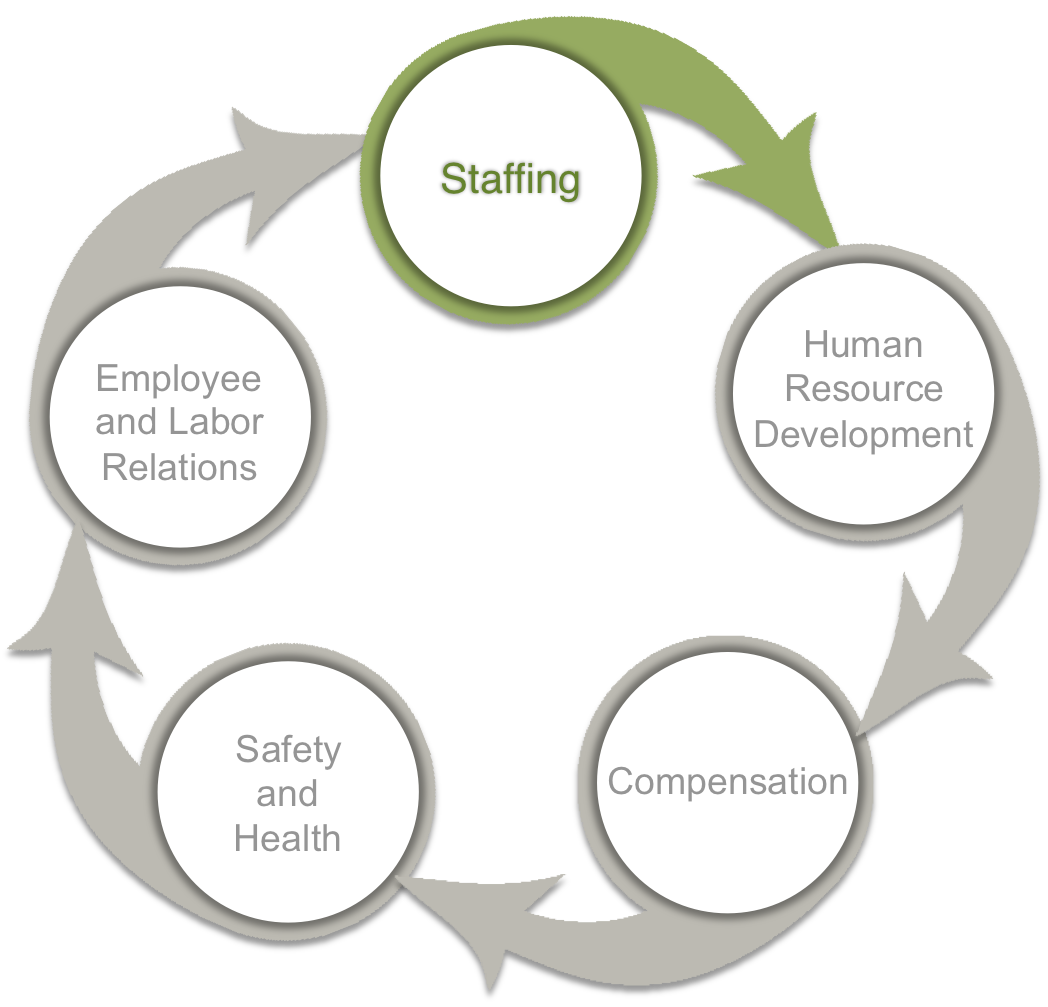
Staffing
During the staffing process, organizations need to hire the most qualified individuals to complete their on-going business operations. Anticipating staffing needs can be a difficult balancing act for even the most seasoned HR professionals as they must keep in mind changes that occur due to promotion, re-assignment, relocation, retirement and any other form of job status change, including termination.
The staffing function itself has several elements, outlined in the slides below. Please use the buttons to navigate through information on each of the staffing considerations.
Functions of the Staffing Process
- Job Analysis and Design
- Human Resource Planning
- Recruitment
- Selection
1. Job Analysis and Design
What does an organization need people to do? How many people are needed? What skills do people need to successfully complete the task?
These are all questions that can be answered through Job Analysis (JA). Job design flows from the results of this analysis.
Job descriptions identify the tasks that need to be completed, creating a job to be filled. Job specifications identify the skills and qualifications necessary for someone to successfully do the job stated in the job description. If you think of the job description as detailing the “hole” the organization needs to fill, the job specification describes the type of “peg” that will best fit the hole.
Written documentation is vital during this process, as these forms should eventually be used not only for recruitment and selection, but also ultimately for performance appraisals and compensation.
2. Human Resource Planning
Human Resource Planning (HRP) goes hand in hand with the other processes. Some challenges need to be tackled as they occur in the day-to-day operations, but it is wise to look into the future and anticipate changes, problems and situations. Strategic planning for the future can make all the difference in how well an organization remains staffed. Anticipating change is the key to the planning process.
3. Recruitment
After jobs are analyzed and a plan is in place, recruiting can begin. There are a number of ways to seek candidates for each position. A few examples include posting jobs internally, asking employees to refer interested applicants, advertising in the newspaper or on the Internet, and even using a recruiting firm that specializes in hiring qualified individuals. Those who are interested in a job will then continue on through the selection process by applying for a job vacancy.
4. Selection
The final component of staffing is the selection process. If the HR department is interested in the applicant, the interview process occurs next. The selection process ends when an applicant receives an offer from the organization. Once that offer is accepted, selection is complete. This process is really a two-way street in that both the organization’s needs as well as those of the prospective employee must be met.

